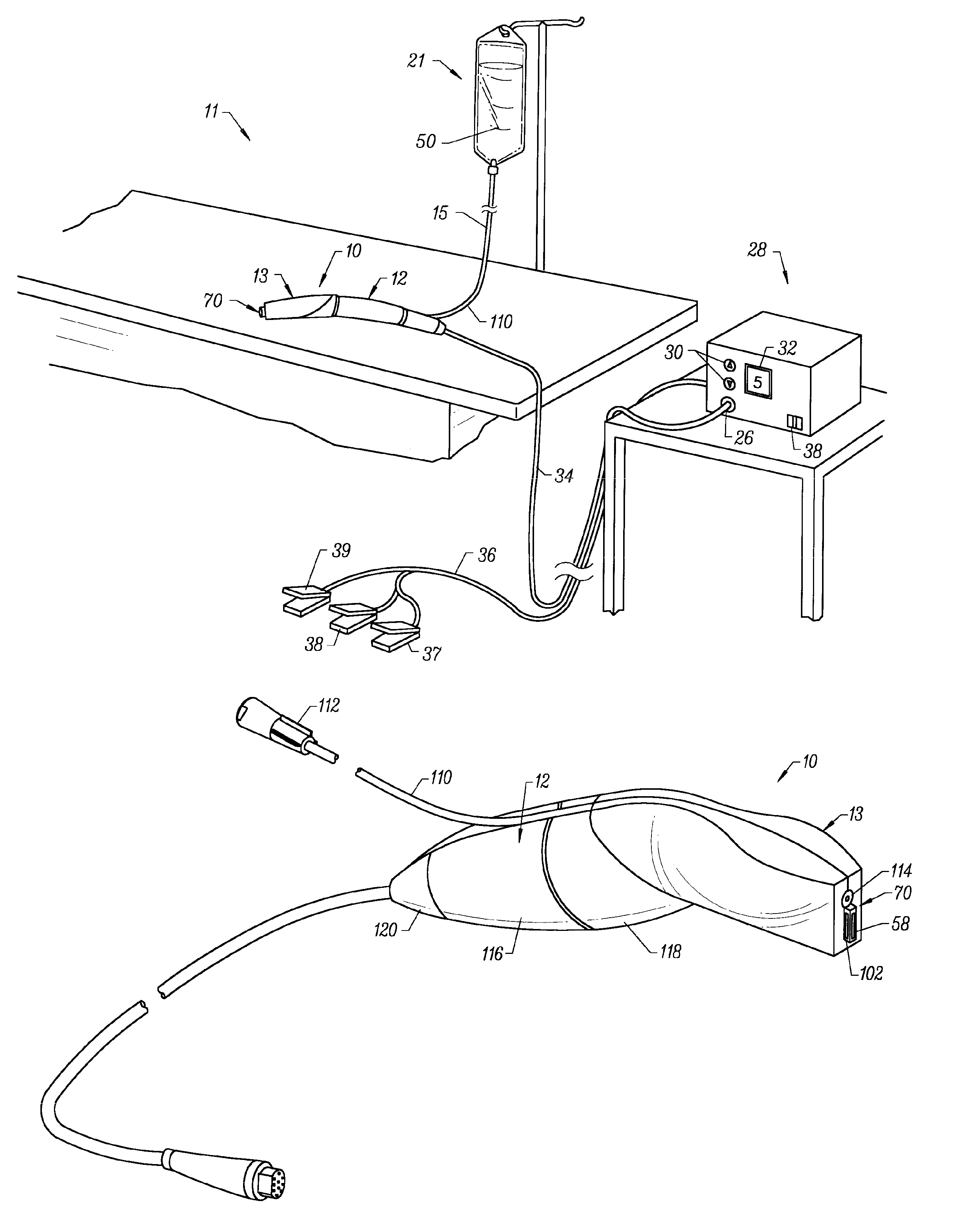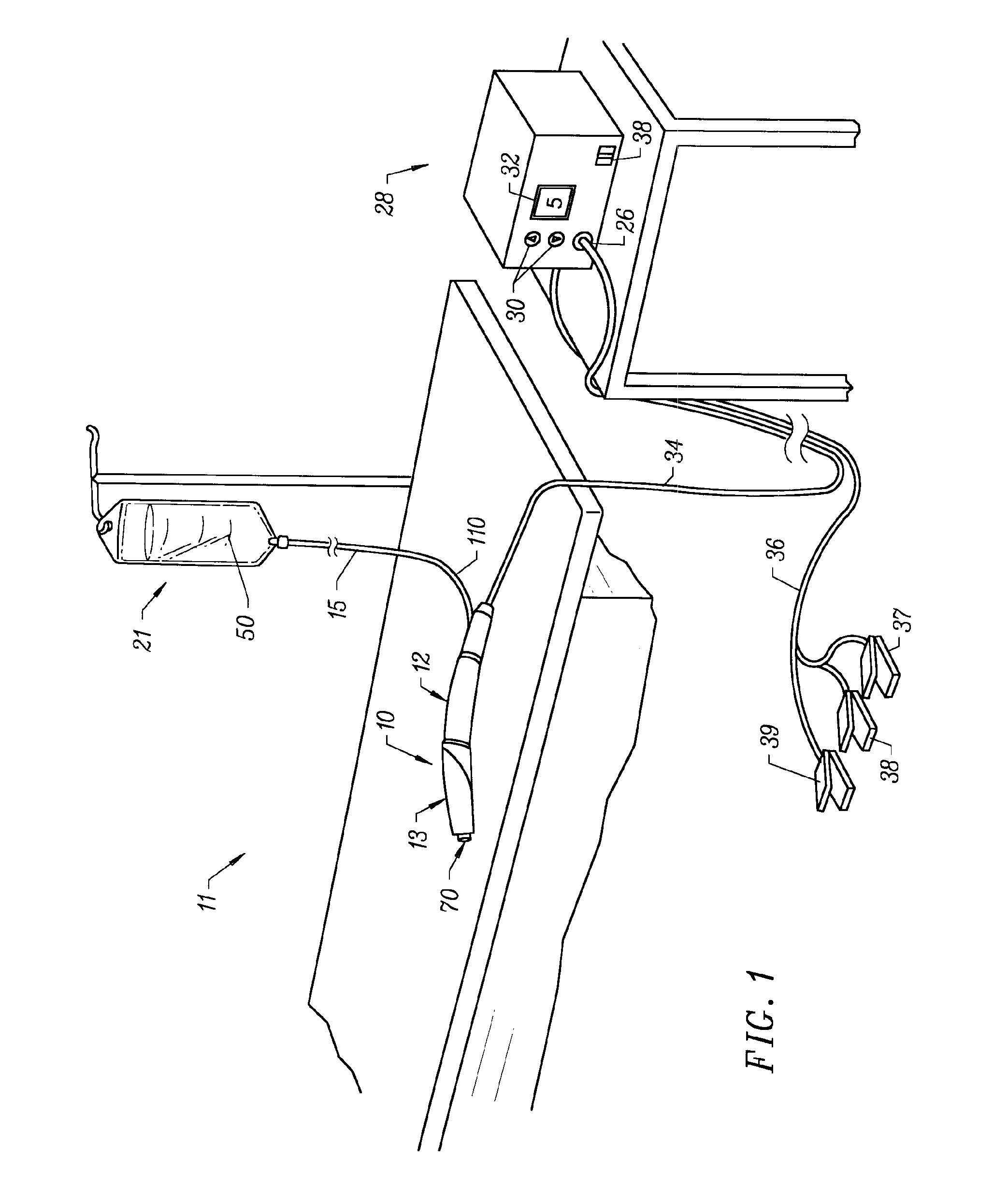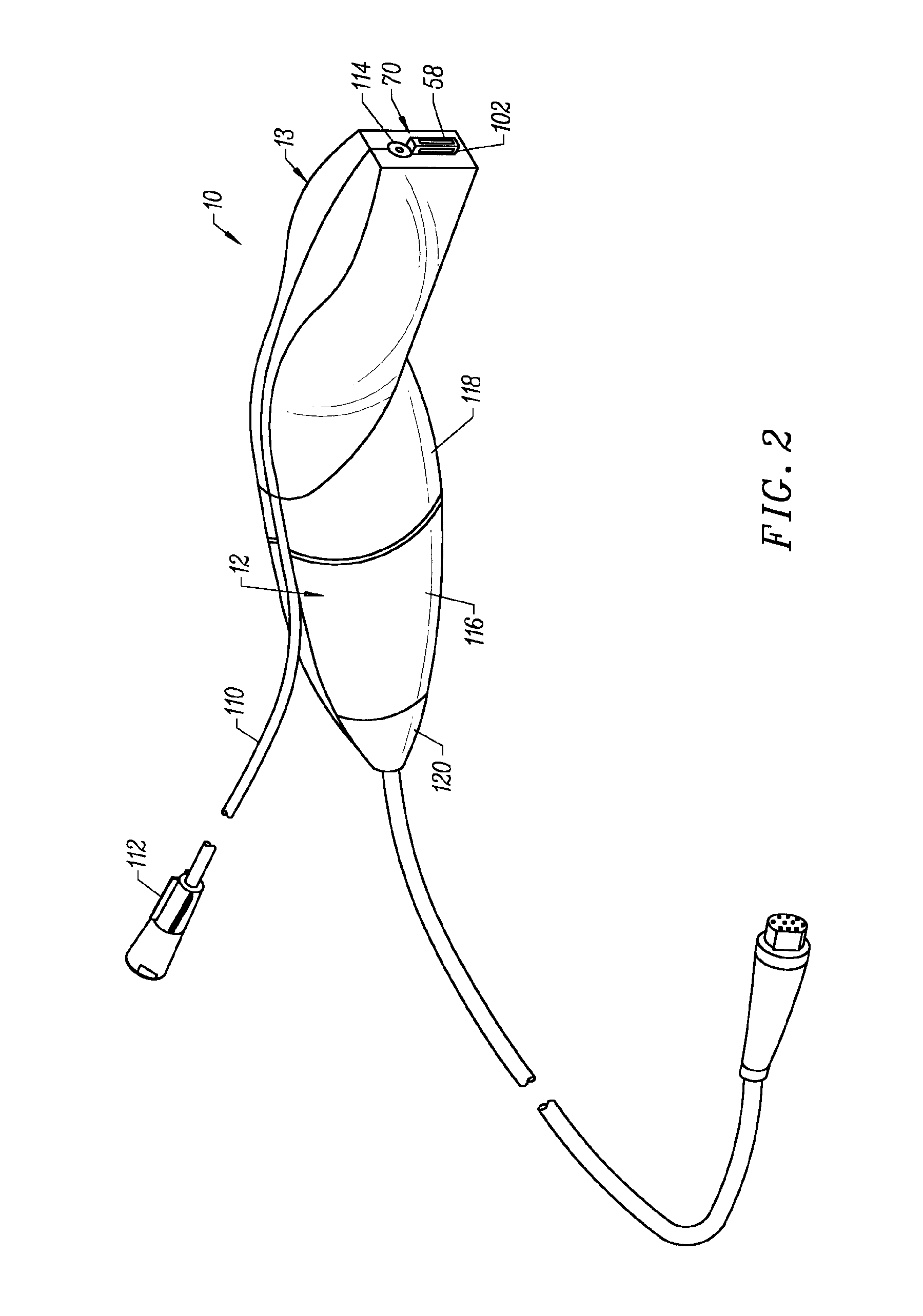Systems and methods for electrosurgical removal of the stratum corneum
a stratum corneum and electrosurgical technology, applied in the field of electrosurgical removal, can solve the problems of collateral tissue damage, patient discomfort, dermabrasion and chemical procedures, etc., and achieve the effects of reducing the temperature of the conductive fluid, avoiding or minimizing current shorting, and minimizing the amount of conductive fluid
- Summary
- Abstract
- Description
- Claims
- Application Information
AI Technical Summary
Benefits of technology
Problems solved by technology
Method used
Image
Examples
Embodiment Construction
[0040]The present invention provides systems and methods for selectively applying electrical energy to a target location within or on a patient's body, particularly including procedures on an external body surface, such as collagenous tissue within the eye and epidermal and dermal tissues in the skin. For convenience, the remaining disclosure will be directed specifically to skin tissue removal and / or the stimulation of collagen growth in the epidermis or dermis, e.g., the removal of the stratum corneum layer. However, it will be appreciated that the system and method can be applied equally well to procedures involving other tissues of the body, as well as to other procedures including open procedures, intravascular procedures, interventional cardiology procedures, urology, laparascopy, arthroscopy, thoracoscopy or other cardiac procedures, cosmetic surgery, orthopedics, gynecology, otorhinolaryngology, spinal and neurologic procedures, oncology and the like.
[0041]The present invent...
PUM
 Login to View More
Login to View More Abstract
Description
Claims
Application Information
 Login to View More
Login to View More - R&D
- Intellectual Property
- Life Sciences
- Materials
- Tech Scout
- Unparalleled Data Quality
- Higher Quality Content
- 60% Fewer Hallucinations
Browse by: Latest US Patents, China's latest patents, Technical Efficacy Thesaurus, Application Domain, Technology Topic, Popular Technical Reports.
© 2025 PatSnap. All rights reserved.Legal|Privacy policy|Modern Slavery Act Transparency Statement|Sitemap|About US| Contact US: help@patsnap.com



